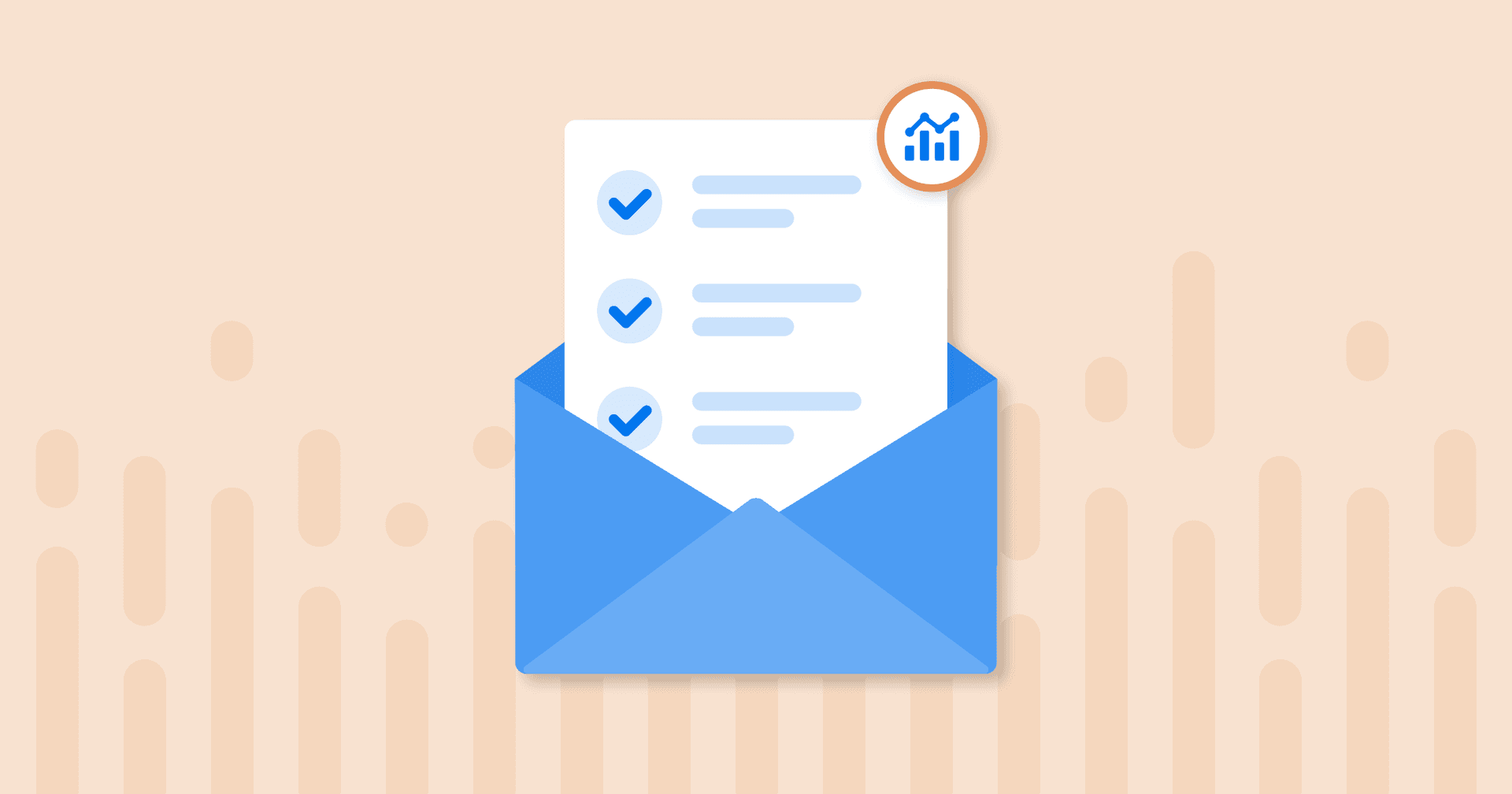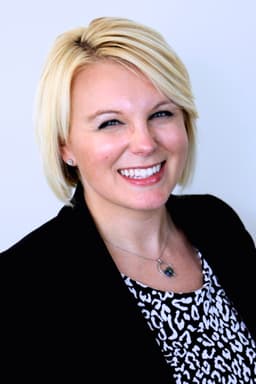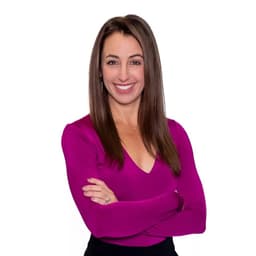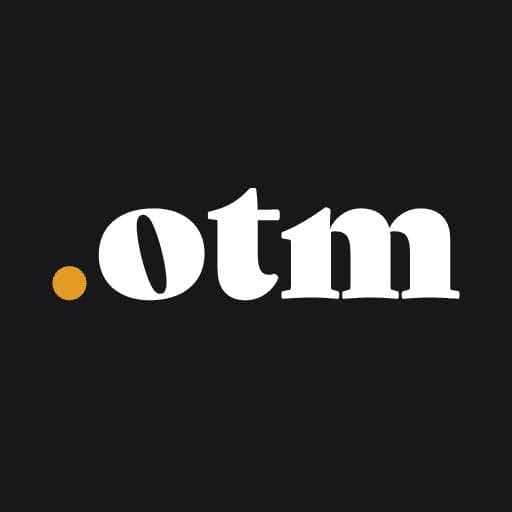Soft Bounce
Identify Delivery Issues
Regularly check whether emails are reaching recipient inboxes.
Make Strategy Changes
Identify patterns and make adjustments, such as timing of emails or automated resends.
Monitor Email Servers
Use bounce rate data to identify issues with email server configuration.
Improving Email Content
Make adjustments to prevent Soft Bounces, like reducing file sizes.
Why Soft Bounce Matters
Identifying the reasons for a bounce message helps improve email deliverability, rectify issues, and build a strong sender reputation. Addressing a high bounce rate, soft or hard, ensures that email marketing efforts aren’t done in vain.
Monitoring the number of contacts bounced provides insights into email list health and recipient preferences. For example, if there’s a pattern in delivery failure (e.g., the same soft-bounced email addresses show up), it may be a sign to clean a mailing list and improve this rate. While there may be other external issues (like a receiving server configuration), understanding the reason for the bounce helps to ensure deliverability and maximum impact.

Stop Wasting Time on Manual Reports... Get Email Insights Faster With AgencyAnalytics
Hard Bounces Vs. Soft Bounces
When it comes to email bounce rates, bounce type matters. To understand the full email marketing picture, it’s important to differentiate between the two types of bounces. While Soft Bounces indicate a temporary delivery issue (e.g., a recipient’s mailbox is full or a temporary issue with the recipient's server ), hard bounced emails happen when an email is permanently rejected. A permanent delivery failure could include an invalid email address, a non-existent domain, or other errors.
Hard Bounces should prompt the immediate removal of invalid email addresses from mailing lists (or added to a suppression list). On the other hand, with soft email bounce the email may still reach the intended recipient once the temporary problem or technical issue is resolved (e.g. when a mailbox space is cleared or the server is back online).
Analyzing bounce details, including the RFC code for Hard and Soft bounces, provides marketers with the necessary insights to optimize email campaigns. Whether it’s reviewing email service provider policies or working with the IT team to address SPF authentication failures (i.e., a domain verification issue), knowledge is power.

How Soft Bounces Relate to Other KPIs
Soft Bounces have a trickle effect on other KPIs. Without email message deliverability, there’s no chance of opens or more meaningful forms of engagement.
For example, there will be a lower Open Rate as fewer email messages reach recipients’ inboxes. In turn, this reduces engagement-based metrics like Clickthrough and Conversion Rates.
A high bounce rate may also mean there’s an issue in the subscriber acquisition process (e.g., buying valid but unused email addresses). In turn, this affects List Growth Rate and even an email sender’s credibility.
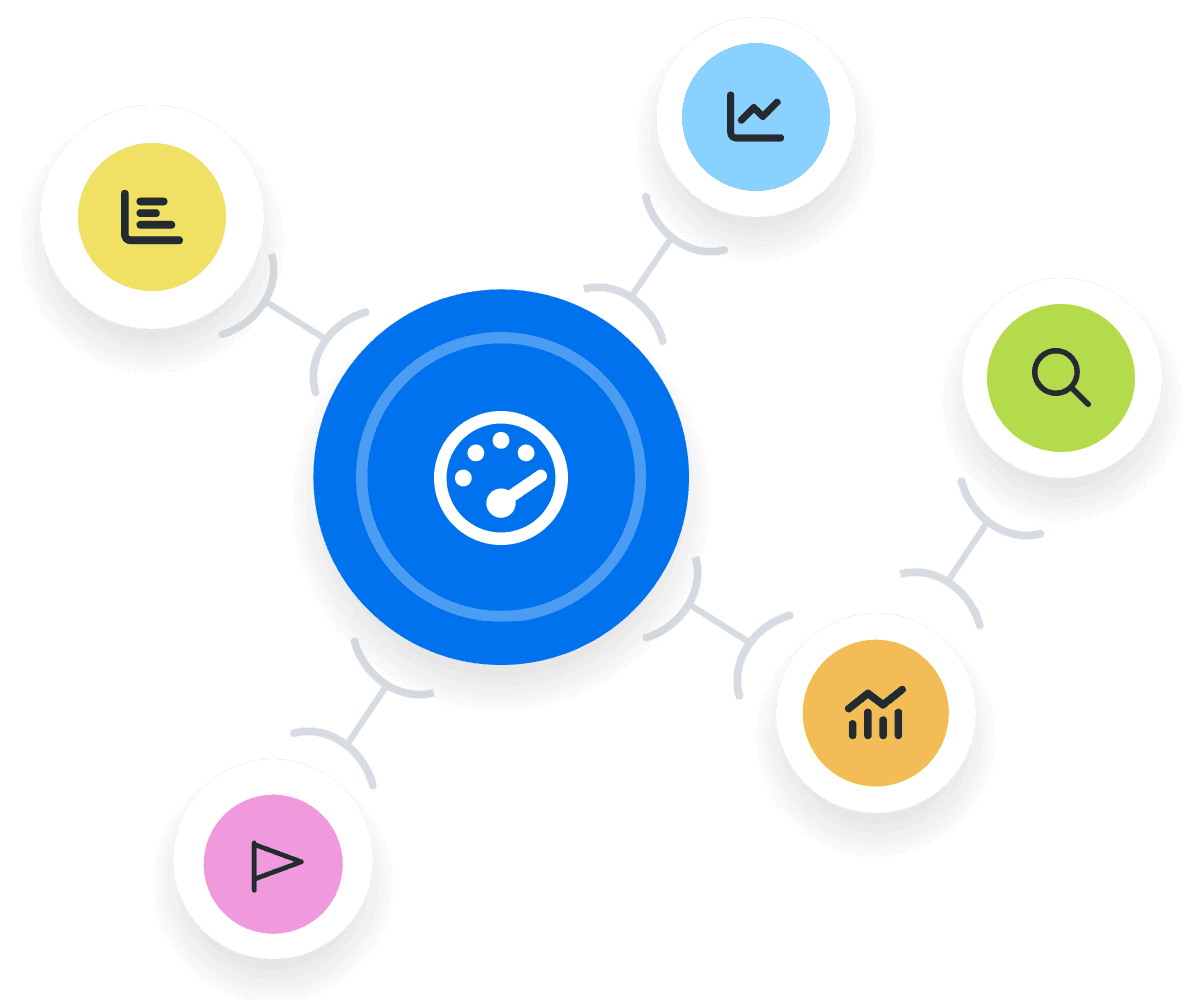
Key Factors that Impact Soft Bounces
Several factors directly influence Soft Bounce rate, such as email list health. Be sure to regularly remove inactive or unengaged subscribers, which reduces the chances of an email bounce. It’s also a good practice to include a double opt-in for new subscribers.
Also, keep an eye on internet service provider (ISP) policies. Essentially, ISPs scan incoming emails for signs of spam, irregularities, or other issues. Adherence to these guidelines ensures compliance and may reduce soft bounces.
Email size is another contributing factor to soft bounces. If a message is too large, it may not be delivered due to limits on a recipient’s email server. Therefore, it’s important to optimize email content, compress attachments, and stay within acceptable limits.
Bounce rate is an important metric to monitor as it can lead to issues with delivery rates later on. Always sanitize your email lists and ensure you aren’t getting high bounce rates.
How To Calculate Soft Bounce Rate
Calculating the bounce rate involves dividing the number of soft-bounced emails by the total number of emails sent. Then, this number is multiplied by 100 to get a percentage.
While it’s useful to understand how this calculation works, it’s automatically calculated by email service providers like Brevo and Mailchimp.
In the formula:
Number of Soft Bounces is the count of emails that bounced back due to temporary issues.
Total Number of Emails Sent is the total count of emails sent in the campaign.
Soft Email Bounce Formula Example
What Is a Good Soft Email Bounce Rate?
A good Soft Bounce rate is generally below 2%. This indicates that the majority of emails are reaching their intended recipients without the influence of temporary issues.
Maintaining this rate or below is ideal; it suggests that an email list is healthy and well-maintained. Plus, it indicates that email content is effective at bypassing spam filters and adheres to best practices.
What Is a Bad Soft Email Bounce Rate?
A bad Soft Bounce rate is typically above 5%. A consistently high percentage could indicate underlying problems with email list health, message sizes, or sending practices.
In other instances, a soft-bounced email could be the result of an external issue (e.g., mail servers being down). Regardless of the reason, monitor this number and make appropriate adjustments when needed, like reducing media file sizes.
How To Set Benchmarks and Goals for Soft Bounce Rate
To get started, research industry-specific Soft Bounce rates, which ensures relevance and realistic benchmarking. Then, review rates for previous email campaigns to determine average historical performance.
Using these two key pieces of data, set a realistic Soft Bounce goal and aim to gradually reduce it (ideally below the industry average). For example, this may look like improving a Soft Bounce rate from 5% to 3%. Use email marketing tools to uncover trends and determine whether there are improvements over time.
Why Soft Bounces Matter to Clients
Clients care about Soft Bounces because it directly affects the visibility and effectiveness of their email marketing campaigns. A high Soft Bounce rate may lead to missed opportunities for engagement, which could derail their overarching goals (like driving brand awareness or growing their subscriber list).
Reducing Soft Bounce rate demonstrates an agency’s ability to maintain email list health, ensure deliverability, and improve engagement.
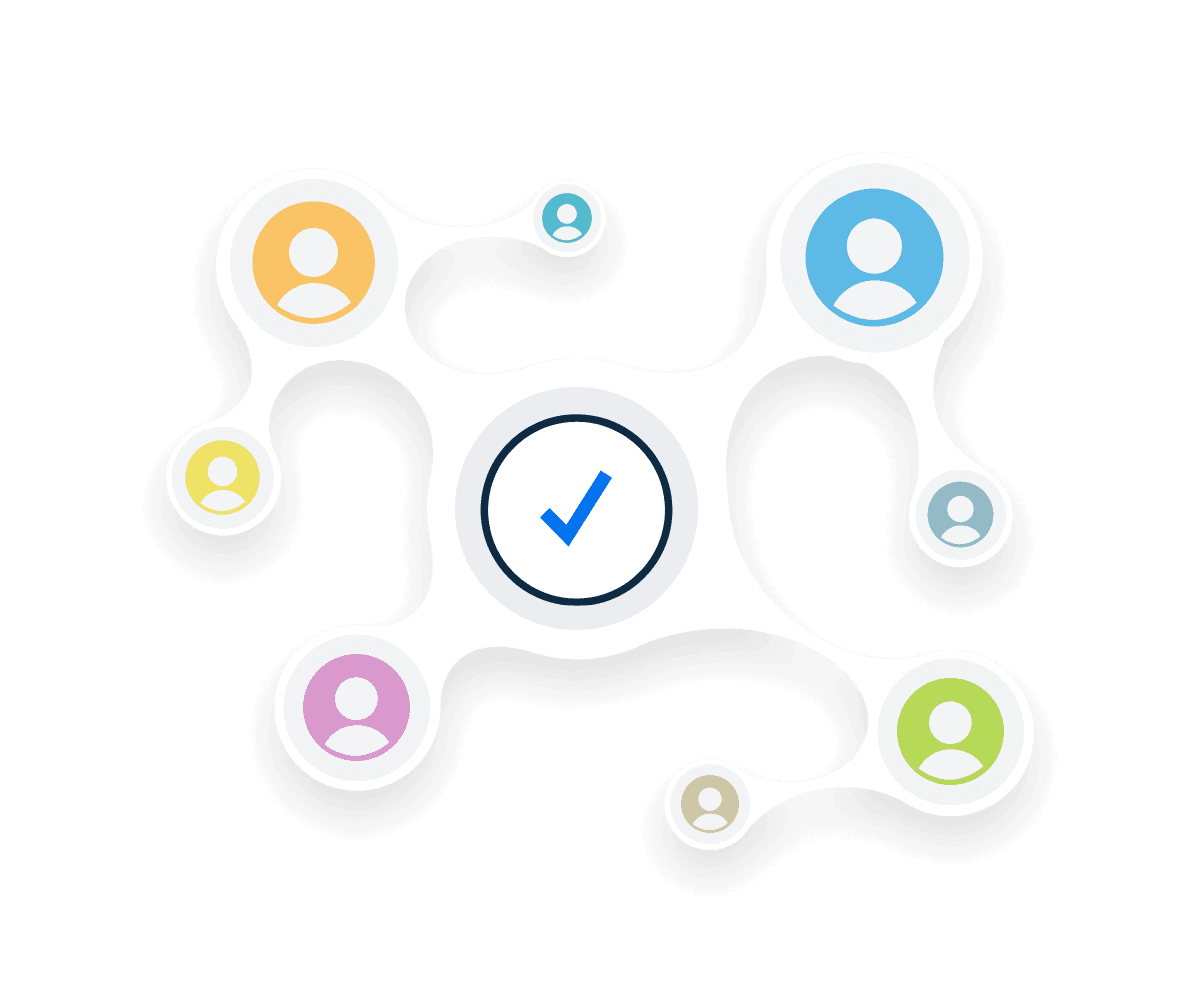
Why Soft Bounces Matter to Agencies
For agencies, a low number of email soft bounces is proof of their ability to navigate complex email delivery systems and follow sending best practices.
Plus, a low rate increases the chances of achieving more tangible goals, such as subscriber engagement and conversions. Keeping this number in check helps clients meet their goals, all while demonstrating the value of an agency’s services.

Best Practices When Analyzing and Reporting on Soft Bounces
Soft Bounce data is one part of the email marketing puzzle. To ensure clients know what’s happening, here are six reporting best practices to follow.
Ensure Data Accuracy
Check that Soft Bounces are accurately shown and differentiated from Hard Bounces.
Track Trends Over Time
Track Soft Bounce rates across campaigns to spot trends, which may help identify delivery issues.
Analyze Bounce Reasons
Investigate and categorize the common reasons for Soft Bounces (e.g., an email inbox is full).
Segment Soft Bounce Data
Break down Soft Bounce data by campaign, email list, or time period for a more detailed analysis.
Use Benchmarking
Compare Soft Bounce rates against industry benchmarks to provide clients with relevant context.
Include Actionable Recommendations
Provide clear steps to reduce Soft Bounce rates, such as list maintenance or timing adjustments.
Stop Wasting Time on Reports. Get Marketing Insights in Minutes With AgencyAnalytics.
In almost all instances I can think of, there’s a symbiotic relationship between email marketing and business objectives. Email marketing is often the continuation of prior efforts from other channels. What is measured is improved. It simply creates a better-quality dialogue between us and clients when they can see performance and trends at a glance.
Brevo Dashboard Example
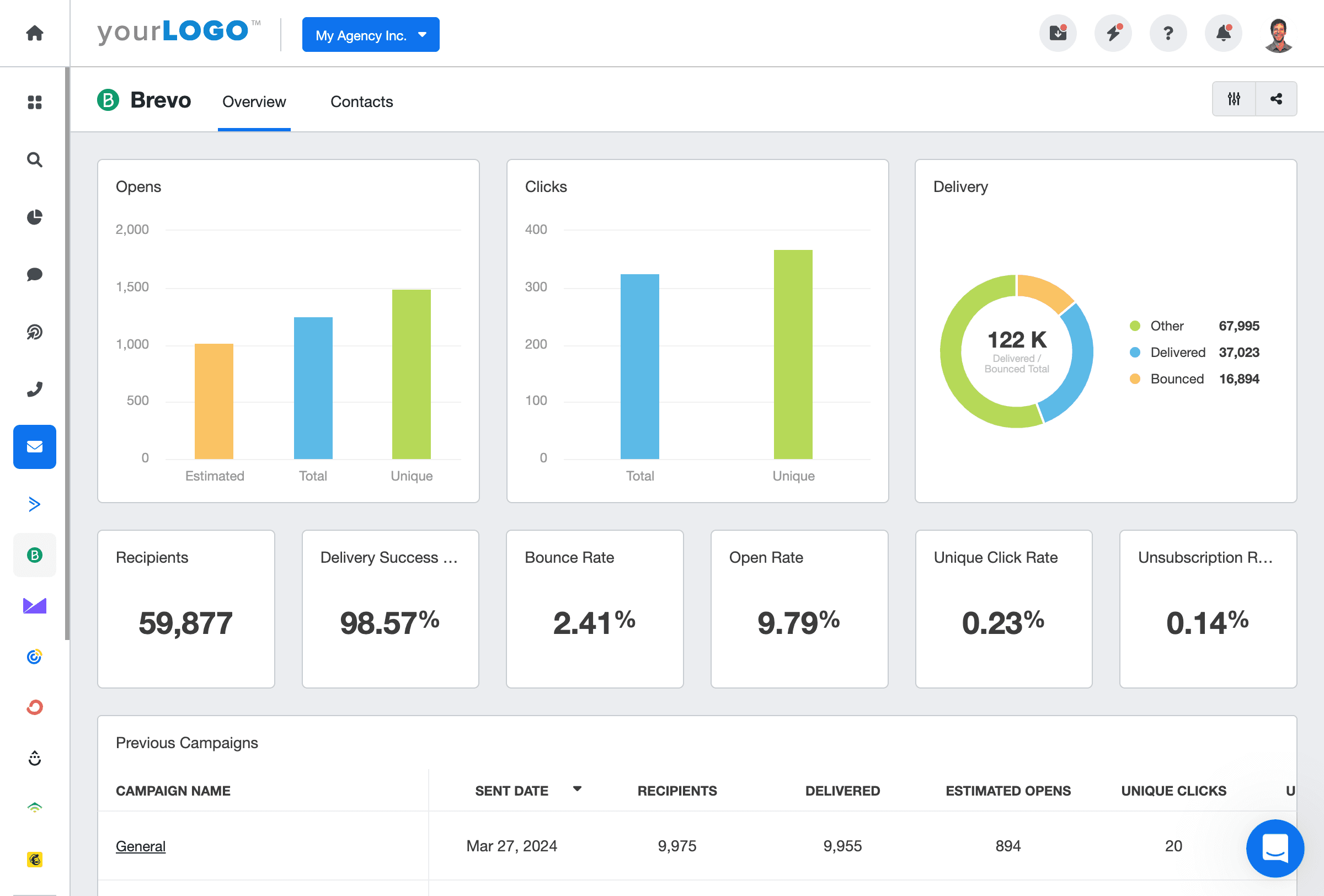
Related Integrations
How To Improve Soft Bounce Rate
With a few improvements, it’s more than possible to avoid ending up with emails in the soft bounce category. Here are a few actionable tips to follow.
Clean Email Lists Regularly
Remove inactive email addresses periodically, especially those with a repeated or prolonged Soft Bound rate. This reduces the number of soft email bounces.
Monitor Sending Frequency
Avoid sending too many emails in a short period, which can overwhelm a recipient’s inbox.
Optimize Email Attachments
Keep emails compact and relevant. This reduces the chances of an error message, overloading the recipient's mailbox, or getting flagged as spam.
Related Blog Posts
See how 7,000+ marketing agencies help clients win
Free 14-day trial. No credit card required.






